Scheduled for November. Hopefully theaters will be open by then. It looks like this one needs a big screen:
September 2020
Fri 4 Sep 2020
Trailers I’m Watching: NO TIME TO DIE (2020) “James Bond.”
Posted by Steve under Movie & TV Trailers , Suspense & espionage films[3] Comments
Thu 3 Sep 2020
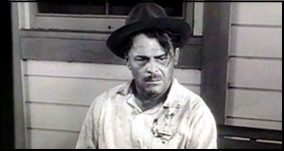
IMPACT. United Artists, 1949. Brian Donlevy, Ella Raines, Charles Coburn, Helen Walker, Anna May Wong, Mae Marsh, Tony Barrett. Co-screenwriters: Dorothy Reid & Jay Dratler. Director: Arthur Lubin.
This one’s billed in most film references as noir, but on my own privately developed (and trademarked) Noir-ometer, I’d give it a 65 at best. To tell you the truth, though, what you get when you watch this movie is three movies in one, each lasting about 25 minutes.

It’s the first third which is the most noirish, with a highly regarded plant manager (Donlevy) discovering that his wife (Helen Walker) is not the loving and faithful wife he thinks he to be. Avoiding a trap set to murder him and his pride hurt for being played for such a sucker, he ends up in a small town in Idaho, where he meets the new owner (Ella Raines) of an about to fail gas station.

In a way the least noirish third of the movie, but maybe it isn’t, he finds that life in a quiet, almost idyllic small town, is not so bad after all. Especially when the attraction between the two continues to grow. But idylls don’t last forever, and when she learns his secret, she convinces him that he needs to go back to the big city (San Francisco) and face his day in court, both figuratively and literally.
Leaving the final half hour of the film to be a rather ordinary detective mystery, chasing down witnesses and other clues, all of which is fine, to be sure, but I still found the ending to be disappointing, especially in comparison to what had come before. And I have to tell you, I found Miss Raines more of pleasure to watch in her garage service garb than I did seeing her all dressed up in the big city.

Thu 3 Sep 2020
A Movie Review by Dan Stumpf: PETE KELLY’S BLUES (1955).
Posted by Steve under Crime Films , Reviews[5] Comments
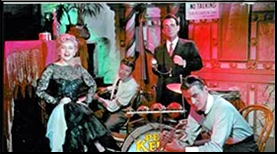
PETE KELLY’S BLUES (Warners/Mark VII, 1955) with Jack Webb, Janet Leigh, Lee Marvin, Peggy Lee, Ella Fitzgerald, Edmond O’Brien, Martin Milner, and Andy Devine. Screenplay by Richard L. Breen; based on the 1951 radio series of the same title. Directed by Jack Webb.
I knew Jack Webb could be funny — screamingly funny on the Tonight Show — and I knew he could be preachy and boring — like his late-60s revival of Dragnet — but I never thought he could be exciting till I saw this.
The year is 1927: Gangster Edmond O’Brien starts squeezing Kansas City jazz musicians for protection money. When they resist, he has one of them killed and the others knuckle under. He even pressures bandleader Webb into using his mistress in the act. At last, sickened by O’Brien’s brutality, Webb rebels in a violent shoot-out.
A plain tale, simply told, and kudos to writer Breen and director Webb for adding just enough depth to keep it real, and just enough action to keep it moving. Webb himself is effectively laconic, in the Dick Powell style, with one of the great lines in the Movies:
“Call the police and get someone to help bring Joey in.â€
“Joey? What’s wrong?â€
“It’s raining on him.â€
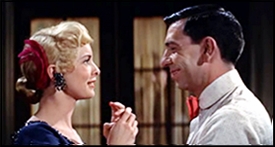
Watching this, I never figured out why Janet Leigh fell helplessly in love with Jack Webb. I mean, he’s not as dour as usual here, but he’s still no Errol Flynn. More like an Americanized Henry Daniell. But the other characters ring true: Peggy Lee’s lush chantoosie, Martin Milner’s hothead, and even Andy Devine, unrecognizable as a tough cop.
Best of all, there’s Lee Marvin as a laconic clarinetist. This character does almost nothing to advance the story, but he’s there anyway, with his droopy eyes and laid-back attitude, lending an authentic jazz-band tone to the proceedings. And he handles the licorice stick convincingly. The fact of his existence in this film — in a medium where every character is a bit of added time & expense — speaks volumes for Breen’s writing and Webb’s knowing production sense.
Add the lush WarnerColor and some real fine, down-home, goat-ropin’ music, and you have a film here well worth your time.
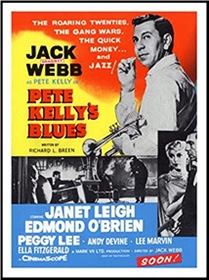
Wed 2 Sep 2020
PI Stories I’m Reading: HAYFORD PEIRCE “Fire in the Islands.â€
Posted by Steve under Stories I'm Reading[3] Comments
HAYFORD PEIRCE “Fire in the Islands.†Short story. Joe Caneili #2. First published in Ellery Queen’s Mystery Magazine, April 1995. Collected in Trouble in Tahiti: P. I. Joe Caneili, Discretion Assuree. (Wildside, paperback, 2000).
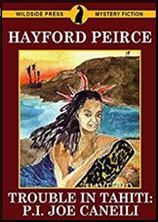
Joe Caneili, a former farmboy from Bookbinder, Kansas, had spent twenty-three years in the French Foreign Legion before retiring and setting up shop in Tahiti as probably that island’s only licensed private investigator. There is not a lot of call for his services in that lightly populated economic and political center of French Polynesia, and in this, his second recorded case, it is personal as much as anything else.
For when the husband of the house next door burns down the house next door, Caneili’s home next door, which he rents from the couple, go up in flames with it, along with all of his possessions, as sparse as they are. His assignment, find the husband, who has disappeared. His client, the wife. It isn’t much of a case, and the husband, widely known as a practical joker, is not difficult to find. But the story is fun to read, largely because of the light, semi-humorous touch Peirce uses to tell the tale.
Hayford Peirce, the author, is better known as a SF writer, often using time travel in his work and having, according to one reviewer, a Jack Vance style of writing, which is not a bad style to be using at all. He has also written several stories about extra-sized Commissaire Alexandre Tama, also of Tahiti, whose cases sometimes overlap with Caneili, as it happens here. His adventures have also been collected in paperback form by Wildside Press.
The Joe Caneili series —
The Stolen Grandfather (ss) Alfred Hitchcock’s Mystery Magazine July 1985
Fire in the Islands (ss) Ellery Queen’s Mystery Magazine April 1995
The Missing House (nv) Ellery Queen’s Mystery Magazine July 1995
A Matter of Face (ss) Ellery Queen’s Mystery Magazine February 1998
The Girl in the Picture (ss) Ellery Queen’s Mystery Magazine Sep/Oct 1999
Le Père Noël on Christmas Island (ss) Ellery Queen’s Mystery Magazine Januay 2012
Crime Wave Batters Tahiti (ss) Trouble in Tahiti (Wildside Press, 2000)
The Lethal Leeteg (ss) Ellery Queen’s Mystery Magazine August 2013
Wed 2 Sep 2020
The video below was filmed in 1956 and consists of several actors playing the roles of Perry Mason, Hamilton Burger, Della Street and Lt. Tragg while auditioning for the parts. I found it very interesting.
Tue 1 Sep 2020
Mike Nevins Reviews Three by HARRY STEPHEN KEELER.
Posted by Steve under Characters , Columns , Reviews[2] Comments
by Francis M. Nevins
With this month’s column we return to an author I’ve been writing about since my teens and still find fascinating in my late seventies: that incomparable filbert Harry Stephen Keeler, who was born in 1890, died early in 1967, and pounded the typewriter from his early twenties until near the end of his life. During his long career he created many series but only a few series characters.
Usually the central element in a Keeler series was not a human being but something else: a house, a book, a circus, an industrial plant, a skull. On the rare occasions when he did create a continuing character, he usually got tired of the man in a year or so and dropped him. The single exception to this rule was Keeler’s first and clearly his favorite series character, that ancient bedraggled universal genius and patron of homeless cats whose name is Tuddleton T. (for Travelstead) Trotter.
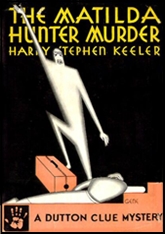
Exactly when Trotter first saw the light of print remained unknown until recently. His earliest appearance between hard covers was in THE MATILDA HUNTER MURDER (Dutton, 1931). But that literary doorstop of 741 closely printed pages was an expansion of a 65,000-word tale, “The Michaux Z-Ray,†which Harry had completed in 1915 and sold for $100 the following year to the Chicago Ledger, where it was published in ten installments (8 April-10 June 1916), all but the first of which are now online thanks to Villanova University.
Which is why we now know that the detective of that serial is not Trotter but a gazabo by the name of Copelia Jarrick who does have quite a bit of similarity to his later counterpart. Trotter’s debut under the latter name was in the vastly longer book version, where he doesn’t come onstage till page 200, summoned by Chief of Detectives Callahan to solve the riddle of the Z-ray machine that is apparently responsible for the deaths of both Mrs. Hunter and her poodle and is also connected in some way with the year-old theft of a platinum brick from a bank in a one-horse town in rural Missouri. But before we see him up close and personal he gets quite a buildup in a conversation between Callahan and insurance magnate Carter Ellwood.
In “Z-Ray†Callahan describes this genius in similar language, almost all of which is repeated in MATILDA HUNTER:
Under either name the character is clearly Keeler’s take on Sherlock Holmes, who was still appearing in new adventures when Harry wrote â€Z-Ray†and whose creator Sir Arthur Conan Doyle died around the time the serial was being expanded into a literary gargantua. But when Callahan in MATILDA HUNTER tells Ellwood that Mr. TTT is the author of a brochure entitled “Crime—Always a Motived Social Reaction As Well As a Motivated One,†we realize that there’s at least as much of Harry himself in the character as there is of Holmes. The distinction between motivation and motiving comes straight out of Keeler’s off-the-wall treatise, THE MECHANICS (AND KINEMATICS) OF WEB-WORK PLOT CONSTRUCTION.
When Trotter steps into Callahan’s office he’s described, in language that comes word for word out of “The Michaux Z-Ray,†as â€a composite picture of a ruddy-faced English gentleman from one of Dickens’ books, and a caricature drawn by an artist on a comic valentine.†We also find in “Z-Ray†a detailed physical description:
The “thru†and “tho†spellings, which (as we know from his newsletters) Keeler despised and which he changed to their conventional forms in MATILDA HUNTER, were obviously mandated by the Chicago Ledger style sheet. The “Z-Ray†description continues:
Keeler reproduced most of this description in MATILDA HUNTER, adding that Trotter is about 65 years old and changing that tan sock to “a yellow one with circular stripes of tan….†Had there been a movie about him, the perfect match for the part would have been W.C. Fields—provided the director could restrain him from muttering “Godfrey Daniel†and juggling with pool cues!
Between Trotter’s appearance on the scene and the resolution of the MATILDA HUNTER riddles come another 541 closely printed pages, full of the bizarre characters and character-names and dialects and wacky coincidences that only Harry dared dream up. Lots of invented “facts†too.Notice, for example, how the romantic problems of Matilda’s whitebread nephew Jerry Evans—which are more complex than those of his “Z-Ray†counterpart Billy McClintock—vanish in an instant on page 737 with the confident scientific assertion that (as somewhat loosely paraphrased by Keelerite Robert E. Briney) “if your mother had six fingers on one hand, you cannot distinguish between violet and black.†Yeah, right. For better or worse, that’s our Harry.
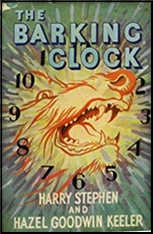
Between MATILDA HUNTER and the second Trotter novel, Keeler’s style had evolved from the Dickensian mode to the eccentric patois that cost him much of his readership over the years and drove him from the prestigious publishing house of E.P. Dutton to (if I may coin a Keelerism) the bottom rung of the literary barrel, a.k.a. Phoenix Press.
In THE CASE OF THE BARKING CLOCK (Phoenix, 1947), social outcast Joe Czeszcziczki (whom everyone mercifully agrees to call Zicky after a few pages) is about to be executed for the murder of State’s Attorney Umphrey Ibstone and appeals for help to Trotter, now long forgotten and living in a cubicle in Chicago’s Hotel of Nameless Men.
The woolly-headed old genius takes two-thirds of the book just to reach Zicky in the death house but proves Joe’s innocence in jig time and earns a comfortable retirement for himself and his beloved cat Sebastian Sixsmith. Harry’s London publisher Ward Lock came out with a longer and more involuted version of the novel in 1951.
Two years after issuing the U.S. version of BARKING CLOCK, Phoenix cut its ties to Keeler. Two years after issuing the English edition, Ward Lock did likewise, leaving Harry with no publisher in his own language. He continued to write direct for translation into Spanish and Portuguese, but even Instituto Editorial Reus of Madrid and Editorial Seculo of Lisbon passed on some of his submissions including the third and final Trotter adventure, THE TRAP, which was completed on July 11, 1956.
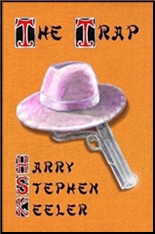
In this gem of daffiosity Trotter is well into his eighties and has been “dead socially†for decades (like Harry himself), and only a few ancients with long memories recall his great triumph in the 25-year-old “Locust Street Murder Case,†i.e. THE MATILDA HUNTER MURDER.
His wardrobe is still atrocious and his wits still keen as he probes the murder of a Chinese laundryman in Oklahoma and the theft of a unique privately printed book of laudatory anecdotes about Harry’s favorite race (all of them, as a note informs potential publishers, made up out of whole cloth by Harry himself).
Before Trotter triggers the titular trap and the murderer of Charley T’Seng is exposed—in the last paragraph, no sooner!—we get to wander in a webwork whose strands include a purple velour hat, a sleepwalking hillbilly, a vanishing glass of water, the Noodle King of Omaha, the cat Grimalky Stripedy-Pants and her five little kittens, a diamond implanted in a cancerous tumor, and so much more. Anyone whom I’ve turned on to this king of eccentrics is invited to hunt on Amazon or another Web-based bookseller for the trilogy celebrating him.